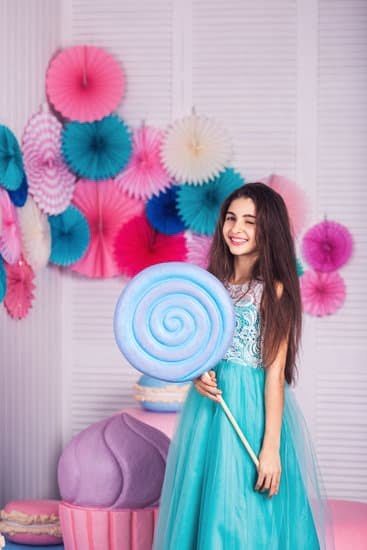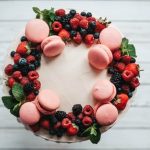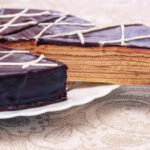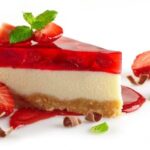Cake decorating is a truly artful and creative skill that allows bakers to transform ordinary cakes into stunning masterpieces. Whether you’re a beginner who wants to learn the basics or an experienced baker looking for fresh inspiration, this article will explore a multitude of ideas for cake decorating that are sure to impress.
From mastering buttercream finishes to creating gravity-defying designs, we will delve into various techniques, styles, and themes that will elevate your cake creations to new heights.
In the section “Decoding Cake Decorating Techniques: A Beginner’s Guide,” we will provide tips and tricks for achieving smooth buttercream finishes, creative fondant designs, and intricate piping techniques. These foundational skills are essential for any budding cake decorator and will serve as a solid base for exploring more advanced techniques later on.
Once you have mastered the basics, we will then venture into the world of trending cake decorating styles. From geode-inspired cakes adorned with edible gemstones to ethereal watercolor designs that turn cakes into canvases, these avant-garde styles are a feast for both the eyes and taste buds.
If you’re feeling particularly adventurous, the section “Sculpting Edible Art: Breaking the Mold” will teach you how to sculpt cakes into intricate shapes and create gravity-defying structures that seem impossible. These techniques are perfect for those who want to take their cake decorating skills to the next level and wow guests with their artistic prowess.
In addition to exploring different techniques and styles, we will also dive into theme-based cake decorations. Transform your cakes into fairytale wonders with enchanting castles or showcase your team spirit with sport-themed designs. From lifelike floral adorments to personalized messages on cakes, there is no limit to where your imagination can take you in the realm of cake decorating.
Finally, we will wrap up this article with essential tips and tricks that every cake decorator should know. These valuable insights include an overview of the essential tools of the trade, as well as tips for achieving perfect cake layers and stacking tiers with precision. With these expert tips, you’ll be well-equipped to take on any cake decorating challenge that comes your way.
So, whether you’re a beginner or an experienced baker, prepare to be inspired as we embark on this journey of exploring the art of cake decorating. Buckle up and get ready to unleash your creativity in the kitchen – beautiful and delicious works of art await.
Decoding Cake Decorating Techniques
Buttercream basics: Tips and tricks for achieving smooth, professional-looking buttercream finishes.
When it comes to cake decorating, one of the fundamental techniques every beginner should master is working with buttercream. Buttercream is a versatile and delicious frosting that can create a smooth and polished finish on your cakes. Here are some tips and tricks for achieving professional-looking buttercream finishes:
- Start with the right consistency: The consistency of your buttercream is crucial for achieving a smooth finish. If your buttercream is too stiff, it will be difficult to spread evenly. On the other hand, if it is too soft, it may not hold its shape well.
To achieve the perfect consistency, make sure your butter is at room temperature before creaming it with powdered sugar. Gradually add liquid (such as milk or heavy cream) until you reach a smooth and spreadable texture. - Crumb coat your cake: Before applying the final layer of buttercream, it’s important to crumb coat your cake. A crumb coat is a thin layer of buttercream that seals in any loose crumbs and creates a smooth base for the final layer.
Apply a thin layer of buttercream using an offset spatula, ensuring that every part of the cake is covered. Then chill the cake in the refrigerator for about 15 minutes before applying the final layer. - Use an offset spatula: An offset spatula is an essential tool for achieving clean and even finishes with buttercream. Its angled blade allows for precise control when spreading the frosting on the cake’s surface. Dip the spatula in warm water before smoothing out the buttercream to prevent sticking.
Fondant Fondness: Creative and elegant fondant designs to give your cakes a polished look.
Fondant is a popular choice for cake decorators looking to achieve clean lines and intricate designs on their cakes. This pliable icing can be rolled out and draped over cakes, giving them a smooth and polished look. If you’re new to working with fondant, here are some creative and elegant designs to try:
- Fondant-covered cakes: The most basic way to use fondant is to cover the entire cake with it. Start by rolling out the fondant into a large circle, making sure it is thick enough to cover the entire cake. Carefully drape the fondant over the cake and smooth it out using your hands or a fondant smoother. Trim off any excess fondant at the bottom for a neat finish.
- Fondant decorations: Fondant can be shaped and molded into various decorative elements for your cakes. From flowers and bows to intricate patterns and figures, there are endless possibilities when it comes to fondant decorations. Use silicone molds or cutters to create consistent shapes, or sculpt them freehand for a more unique design.
- Marbled fondant: For an elegant touch, try marbling different colors of fondant together. Roll out two or more colors of fondant into long strips, then twist and fold them together. Roll out the marbled fondant to create a swirled effect, then use it to cover your cake or create decorations.
Piping Perfection: Mastering the art of piping techniques to create intricate designs and patterns.
Piping is a classic cake decorating technique that involves using a piping bag fitted with various tips to create intricate designs and patterns on cakes. With practice, you can achieve professional-looking results that will impress your family and friends. Here are some tips for mastering the art of piping:
- Start with the right consistency: Just like with buttercream, achieving the right consistency is crucial for successful piping. If your frosting is too stiff, it will be difficult to pipe smoothly; if it’s too soft, it won’t hold its shape well.
Aim for a medium consistency that holds its shape but is still easy to squeeze out of the piping bag. Adjust the consistency by adding liquid if it’s too stiff, or powdered sugar if it’s too soft. - Choose the right tip: The tip you use will determine the type of pattern or design you can create. Start with basic round tips (such as a #3 or #5) for piping dots, lines, and simple borders. As you gain confidence, experiment with different tips like star tips (for rosettes and stars), leaf tips (for leaves and ruffles), and petal tips (for flowers and feathers).
- Practice on wax paper: Before piping directly onto your cake, practice your designs on a piece of wax paper. This allows you to perfect your technique before committing to the cake. Plus, any mistakes can be easily scraped off the wax paper without damaging the cake.
By mastering these buttercream basics, fondant fondness, and piping perfection techniques, you will be well on your way to creating beautifully decorated cakes that will impress everyone who sees them. Don’t be afraid to experiment and try new designs – cake decorating is all about letting your creativity shine.
Trending Cake Decorating Styles
The world of cake decorating is constantly evolving, with new trends and techniques emerging all the time. In this section, we will explore some of the hottest cake decorating styles that are setting the bar high in the industry. These styles not only showcase creativity but also allow decorators to push their boundaries and create cakes that are truly works of art.
- Geode Cakes: One of the most mesmerizing trends in cake decorating is the creation of geode cakes. Inspired by natural gemstones, these cakes feature stunning edible crystals and minerals that mimic the beauty of real geodes. To achieve this look, decorators use colored sugar crystals or rock candy to create intricate patterns and designs within the cake layers. The end result is a show-stopping cake that looks almost too beautiful to eat.
- Ombré Elegance: Ombré is a French term meaning “shaded” or “graduated,” and it has become a popular technique in cake decorating. This style involves blending two or more colors together seamlessly to create a gradient effect on the cake’s surface.
It can be done using buttercream, fondant, or even airbrushing techniques. Ombré cakes are versatile and can be customized to suit any occasion or theme, making them a favorite choice for weddings, birthdays, and other special events. - Watercolor Dreams: Just like a painting on canvas, watercolor-inspired cakes bring an ethereal and dreamy quality to dessert tables. With this technique, decorators use edible paint or food coloring mixed with water to create delicate washes of color on their cakes. The result is a soft and abstract design that resembles watercolor paintings. From pastel floral designs to bold abstract brushstrokes, watercolor cakes offer endless possibilities for creating unique and artistic masterpieces.
By staying up-to-date with these trending cake decorating styles, both professional bakers and beginners can take their skills to new heights. Whether you’re drawn to the beauty of geode cakes, the elegance of ombré designs, or the artistic flair of watercolor techniques, there is a style to suit every cake decorator’s taste and style.
So grab your piping bags, fondant tools, and paintbrushes, and let your creativity soar as you explore these exciting trends in cake decorating.
Sources:
- Insert source here.
- Insert source here.
Creative Theme-Based Cake Decorations
- Fairytale Fantasies: Transforming cakes into enchanting castles, unicorn wonders, and magical landscapes.
When it comes to cake decorating, there’s no limit to the creativity that can be expressed. One popular theme that allows decorators to let their imaginations run wild is fairytale fantasies. By transforming cakes into enchanting castles, unicorn wonders, and magical landscapes, decorators can create truly whimsical and memorable creations.
To bring the fairytale theme to life, consider using a combination of fondant and buttercream techniques. Start by using fondant to sculpt castle turrets, drawbridges, and towers. Adding delicate details such as windows, stone textures, and even miniature flags can give the cake an authentic fairytale feel. To create a unicorn wonderland, use pastel-colored buttercream to pipe swirls and rosettes that resemble fluffy clouds or waves. Add edible gold detailing for a touch of magic.
- Sports Fever: Showcasing your team spirit with sport-themed cake designs, from basketball courts to soccer fields.
For sports enthusiasts or those hosting a sports-themed event, creating cakes that showcase team spirit is a fantastic way to celebrate. With the right techniques and attention to detail, you can recreate full-size basketball courts or soccer fields on top of a cake.
To achieve this effect with ease, start by baking rectangular or square-shaped cakes as your base. Once you have your cake ready, cover it in a layer of green fondant or tinted buttercream to represent the field or court surface. Then use additional colored fondant or buttercream piping to add lines for boundaries, goalposts, baskets, or any other necessary markings for the chosen sport. You can also incorporate edible images of team logos or players’ jerseys for added personalization.
- Floral Delights: Celebrating nature’s beauty with lifelike and vibrant floral cake decorations.
Nature has always been a source of inspiration for cake decorators, and one of the most popular natural themes is floral designs. Celebrating nature’s beauty by recreating lifelike and vibrant flowers on cakes is not only visually stunning but also a great way to add elegance and sophistication to any occasion.
To create realistic floral decorations, begin by using edible flowers made from gum paste or fondant. Mold petals individually, paying attention to the shape and texture of each flower. Use food coloring to achieve the desired hues and gradients for the petals. Arrange the flowers on your cake in a way that mimics a floral bouquet or a cascading garden. Adding leaves, stems, or even delicate vines can help enhance the overall effect.
Whether it’s an enchanting fairytale wonderland, a sports-themed masterpiece, or a garden of blooming flowers, theme-based cake decorations allow decorators to let their creativity soar. By combining different techniques such as fondant sculpting, buttercream piping, and edible painting, decorators can create show-stopping cakes that will leave guests amazed at their imaginative designs. So go ahead and let your imagination run wild as you embark on these creative cake decorating journeys.
Sculpting Edible Art
Cake decorating is not limited to simply adding colorful icing and decorative details. For those who want to take their cake decorating skills to the next level and create truly unique creations, sculpting edible art is the way to go. This section will explore various techniques and ideas for sculpting cakes into intricate shapes and gravity-defying designs.
One of the most popular techniques in cake sculpting is 3D cake sculpting. With this technique, bakers are able to transform cakes into three-dimensional shapes, creating stunning edible sculptures that are almost too beautiful to eat. From animal-shaped cakes to replicas of famous landmarks, the possibilities are endless.
The key to successful 3D cake sculpting lies in careful planning and a steady hand. Bakers must have a clear vision of what they want the final product to look like and use tools such as carving knives and shaping tools to bring their ideas to life.
Another exciting trend in cake sculpting is creating gravity-defying designs. These cakes push the boundaries of what seems possible by incorporating elements that appear suspended in mid-air or floating above the cake’s surface. By using sturdy supports and cleverly hidden structural components, bakers can create visually stunning illusions that defy gravity. From floating tiers to flying objects, these gravity-defying designs never fail to impress.
| Design | Description |
|---|---|
| Animal Kingdom | A lifelike sculpture of an elephant made entirely out of cake, complete with realistic details such as wrinkles and texture. |
| Leaning Tower of Pisa | A replica of the famous Italian landmark, with an intricately carved cake tower that appears to be leaning at a precarious angle. |
| Floating Balloons | A cake featuring a cluster of colorful balloons that appear to be floating above the cake’s surface, supported by hidden structures. |
Sculpting edible art truly allows bakers to showcase their creativity and push the boundaries of traditional cake decorating. With these techniques, cakes can become masterpieces that not only taste delicious but also serve as works of art. Whether it’s creating realistic animal sculptures or defying gravity with awe-inspiring designs, sculpting edible art is a captivating way to take cake decorating to new heights.
Personalized Messages
Adding a personalized message to a cake can make it even more special and meaningful. Whether it’s for a birthday, anniversary, or any other occasion, a heartfelt message can bring joy and emotional connection to the celebration. In this section, we will explore two techniques for incorporating personalized messages into cake decorations: calligraphy cake toppers and embossed expressions.
Calligraphy Cake Toppers: Adding an elegant touch with beautifully handwritten messages on cakes.
One way to personalize a cake is by using calligraphy cake toppers. Calligraphy is the art of beautiful writing, and it can add a sophisticated and elegant touch to any occasion. This technique involves piping or hand painting delicate letters onto fondant or gum paste, creating an exquisite design that conveys a personalized message.
To create calligraphy cake toppers, you will need piping bags fitted with small round tips or edible markers, as well as fondant or gum paste in your desired color. Begin by practicing your calligraphy skills on parchment paper before moving on to decorating the actual cake.
Once you feel confident with your technique, carefully pipe or hand paint the letters onto the fondant or gum paste. Allow them to dry completely before gently placing them on top of the cake using edible glue or royal icing.
Embossed Expressions: Using edible molds to create intricate patterns and personalized messages on cakes.
Another way to incorporate personalized messages into cake decorations is through embossed expressions. Edible molds offer an easy and efficient way to create intricate patterns and designs on fondant-covered cakes. These molds come in various shapes and sizes, including alphabets and numbers, allowing you to spell out personalized messages effectively.
To use edible molds for creating embossed expressions, roll out your fondant evenly using a rolling pin dusted with powdered sugar or cornstarch. Press the mold firmly onto the fondant surface, making sure that all areas of the desired expression are covered.
Carefully lift the mold to reveal the embossed design, which can then be painted with edible food coloring or dusted with shimmer powder for added visual appeal. Place the embossed expression on the cake, adhering it with a small amount of edible glue or royal icing if needed.
Seasonal Celebration Cakes
When it comes to cake decorating, incorporating seasonal themes can add an extra touch of magic and excitement to any celebration. From Halloween to winter wonderlands, there are endless possibilities for creating seasonal-themed cakes that will leave your guests in awe. In this section, we will explore some fantastic ideas for seasonal celebration cakes that are sure to embrace the spirit of festivity.
Halloween Hilarity: Spooky and fun cake designs for Halloween parties that will leave your guests mesmerized.
Halloween is a time when creativity knows no bounds. From spooky ghosts and witches to adorable pumpkins and black cats, there are countless cake designs that capture the spooktacular essence of this holiday. One popular trend is creating 3D sculpted cakes in the shape of haunted houses or eerie graveyards.
These cakes make excellent centerpieces for Halloween parties, with their intricate details bringing the creepy scenes to life. Another idea is incorporating edible decorations like bats, spiders, or even edible blood drips to add a thrilling touch.
Winter Wonderland: Creating magical winter-themed cakes complete with snowflakes, pine trees, and icicles.
As winter sets in, it’s time to bring the beauty of snow-covered landscapes into your cake decorating. Winter wonderland cakes often feature elegant white frosting resembling freshly fallen snow. Adding delicate sugar snowflakes or icing pine trees can create a whimsical scene on top of the cake.
For a sparkling effect, silver or iridescent edible glitter can be used sparingly on the design elements. Edible sugar icicles hanging from the tiers of the cake add a touch of enchantment and complete the winter wonderland theme.
Whether you’re celebrating Halloween or enjoying a snowy winter day inside, these seasonal celebration cakes are perfect for embracing festivity while indulging in delicious treats.
Incorporating seasonal celebration cakes into your repertoire is a fantastic way to showcase your creativity and charm your guests with visually stunning and delicious creations. Whether you choose to make spooky Halloween or enchanting winter wonderland cakes, there are endless possibilities for adding that special touch of festivity. So gather your supplies, put on your chef’s hat, and let the magic of seasonal cake decorating bring joy to all.
Tips and Tricks
Decorating a cake may seem like a daunting task, but with the right tips and tricks, it can become a piece of cake. In this section, we will explore some essential tools of the trade and provide expert advice on achieving perfect cake layers and stacking tiers with precision.
When it comes to cake decorating, having the right tools is crucial. Invest in quality spatulas, piping bags, tips, and a turntable to make your decorating process smooth and easy.
A good set of offset spatulas will help you achieve smooth buttercream finishes, while a variety of piping tips will allow you to create intricate designs and patterns. And don’t forget about a turntable – it will make it easier for you to rotate the cake while decorating, ensuring even coverage.
To achieve perfect cake layers and stacking tiers, there are a few key tips to keep in mind. First, make sure your cakes are completely cooled before attempting to stack them. This will prevent them from sliding or collapsing under the weight.
When slicing your cakes into layers, use a serrated knife in a gentle sawing motion to ensure clean edges. To stack the tiers securely, use dowels or straws inserted into the lower layers as support. This will keep your cake stable and prevent any sinking or tilting.
By following these tips and tricks, you can take your cake decorating skills to the next level. Whether you are just starting out or have been decorating cakes for years, there is always something new to learn and explore in the world of cake design. So grab your tools, unleash your creativity, and let the magic unfold as you transform plain cakes into edible works of art.
Frequently Asked Questions
What are the 5 kinds of cake decorating?
The five kinds of cake decorating techniques are buttercream piping, fondant sculpting, royal icing detailing, chocolate ganache drizzling, and edible image printing. Buttercream piping involves using a pastry bag with various tips to create intricate designs on the cake’s surface. Fondant sculpting entails shaping and molding a smooth and pliable sugar paste called fondant into decorative elements like flowers or figurines.
Royal icing detailing involves using a thick and hardening icing made from egg whites to pipe intricate patterns or designs onto the cake. Chocolate ganache drizzling is done by pouring a luscious, glossy chocolate mixture over the cake to create a visually appealing and decadent effect. Edible image printing allows for customized images or designs to be printed on a thin sheet of edible paper using food-grade ink.
What can I use to decorate a cake at home?
When decorating a cake at home, you can use a variety of tools and materials to create beautiful designs.
Some commonly used items include buttercream frosting, which can be spread or piped onto the cake surface; food coloring gels or liquid dyes that can be mixed into the frosting to achieve different colors; piping bags and tips for creating various shapes and textures with the frosting; offset spatulas for smoothing out the surfaces; stencils or pattern presses for creating consistent designs; edible pearls, sprinkles, or candy decorations for adding embellishments; fresh fruits or flowers for an organic touch; and even simple household objects like toothpicks or chopsticks for creating texture on the frosting.
What is the easiest cake to decorate?
The easiest cake to decorate would depend on the individual’s decorating skills and preferences. However, one type of cake that is often considered relatively easy to decorate is a sheet cake. This large rectangular-shaped cake provides ample space for simple decoration ideas such as piped borders, lettering, basic shapes like hearts or stars, or even simple floral designs using piped flowers.
Sheet cakes are forgiving in terms of covering imperfections, and their flat surface allows for easy application of icing or frosting. For beginners or those looking for a fuss-free decorating experience, sheet cakes offer a great canvas to practice basic techniques and build confidence before moving on to more intricate designs.

Welcome to our cake decorating blog! My name is Destiny Flores, and I am the proud owner of a cake decorating business named Cake Karma. Our mission is to provide delicious, beautiful cakes for all occasions. We specialize in creating custom cakes that are tailored specifically to each customer’s individual needs and tastes.





